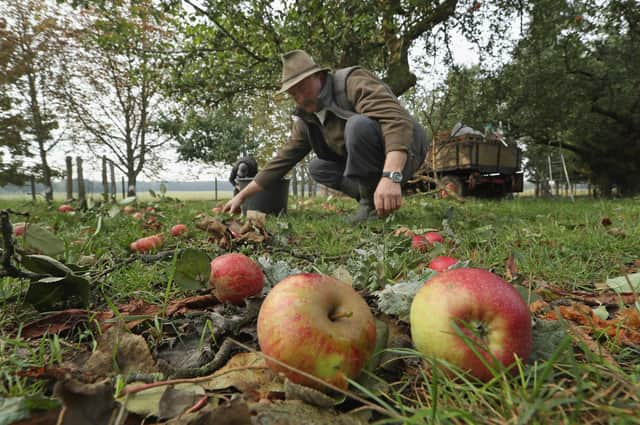Scotland's orchards have been in decline but schools like Dumfries Academy have discovered the many reasons why they are important – Stephen Jardine


When he wasn’t doing that he was ringing a bell for fire drill and telling us to form up in neat lines to be counted on that very same grass. No wonder school seemed confusing. We weren’t even sure what the grass was for.
This week I was back at Dumfries Academy for the first time in 40 years and things were a bit different. For a start the Rector was not the old terrifying bloke in a mortar board and cloak I remember. Joanne Dillon is the first female in the job and looks and sounds like the sort of modern educationalist every school wants and needs.
Advertisement
Hide AdAdvertisement
Hide AdOn top of that, they’ve found a new use for the problematic grass. As part of the People’s Project which is breathing new life into Dumfries, the space has been turned into an outdoors classroom and community orchard.
They asked me along to be part of the official opening and it was great to see how much has changed for the better. Dumfries and Galloway Council’s chief education officer Jim Brown gave a terrific speech about the way we stuff young people into classrooms when the outside environment matters so much to the next generation. “So let’s use it,” he said.
Outside spaces are increasingly being recognised as valuable learning devices here, as they have been in Scandinavia for years. They are a great way to connect young people with nature but also with diet.
In Dumfries, the outdoor teaching area has been landscaped with a variety of apple trees, reflecting the region’s orchard heritage. The Galloway pippin is one of the surviving varieties from the times when the area had a rich fruit tree tradition.
Pressure on land and the decline of the great country estates with their walled gardens has seen fewer orchards in recent years but a recent survey suggested almost 2,000 still exist with the Borders, Fire, Perthshire, Lanarkshire and Dumfries and Galloway having some of the largest concentrations.
Looking ahead, perhaps schools are the key to their survival in Scotland? Great projects like the one in Dumfries mean new orchards are planted and maintained but they also hand the job of nurturing them to the next generation.
The Scottish Orchards organisation is also promoting fruit-tree growing by schools. As its director John Hancox said “The best time to plant an apple tree was 20 years ago. The next best time is now.”
And of course, apples are for eating.
In time, the aim is for the fruit from the trees in Dumfries to be used for domestic science classes in the school and to support the menu in the Usual Place, a community café offering work opportunities for youngsters with additional support needs.
Advertisement
Hide AdAdvertisement
Hide AdOn the day I visited this week, dozens of kids were sitting on benches in the fledgling orchard, enjoying the spring sunshine and the open air. We’ve come a long way from telling them to keep off the grass and if nurturing nature is key to combatting climate change, it starts with projects like this one at my old school.
Comments
Want to join the conversation? Please or to comment on this article.
